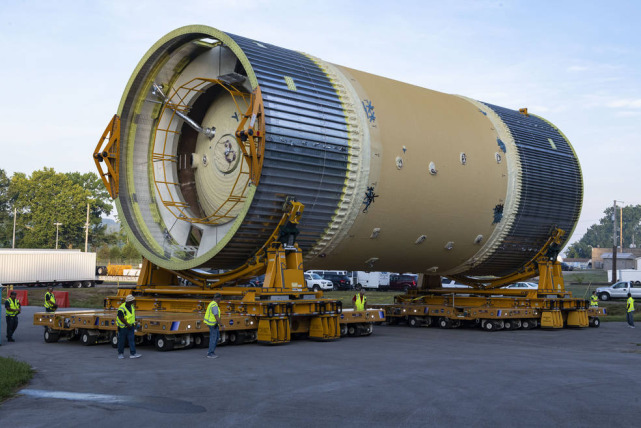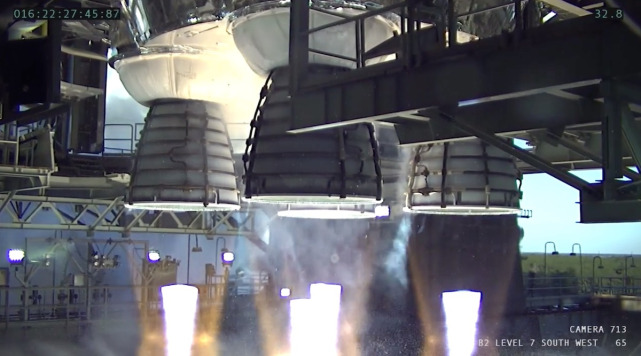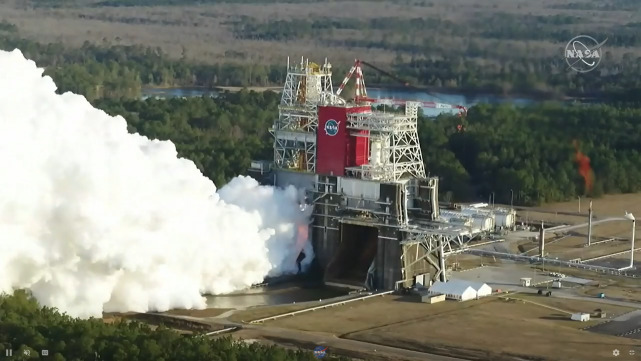January 17, the first stage of the “Space Launch System” (SLS) rocket core developed by Boeing in the United States was automatically shut down after only burning for 67 seconds during the first ignition test at the Stannis Center, and did not burn for eight minutes as expected.
This is the first time that the SLS rocket has suffered a major test failure in the development process.
It should be said that there is no reason for failure in the SLS rocket first stage test.
The RS-25 comes from the famous main engine of the space shuttle.
Since its first flight in 1981, the RS-25 has supported more than 100 flights, and each time it successfully completed its mission.
Both space shuttle accidents have nothing to do with the RS-25. Rockdalen, which undertakes engine manufacturing, did not lose the chain and took out enough engines as scheduled.
The major difference between the SLS core stage and the space shuttle is that the number of engines has been increased from three to four, the huge external fuel tank and separation mechanism are eliminated, and the fuel tank is put in the rocket stage.
It should be said that it is easier to implement engineering than the space shuttle.
Moreover, SLS does not consider reuse, which is a huge less difficult point than the space shuttle.
Since Boeing could work with Loma to build the space shuttle, it should not have much major key technology to solve for traditional rockets such as SLS.
Even so, it took Boeing 10 years to go from the contract to the day of the core first-class ignition test.
With a mature engine, this is really not a good result.
Since the space shuttle was put into operation for decades, the space community has had a deeper understanding and made great progress in various fields of launch systems.
Whether it is structural analysis, vibration analysis, hydrodynamic analysis, there are more means, including various sensors and supercomputers.
Advances in electronic technology also allow engineers to build rockets with smaller, lighter and more reliable devices. Boeing still failed to successfully complete the first-level ignition test, which is a little unreasonable.

If aerospace is a risky thing, failure and mistakes are inevitable, and Boeing has been a little too “unavoidable” over the years.
Except for many problems on the civil airliner that have not been solved, except for the “Delta-4” rocket, which is already in maturity, almost no aerospace model is smooth.
Boeing’s failure to test the CST-100 manned spacecraft in late 2019 is also a very bad signal.
Boeing once proposed to raise its own funds to implement another CST-100 non-manned flight in 2020 to prepare for manned flights.
However, the New Year’s Day is over, and we are moving towards the Spring Festival in 2021.
The CST-100 still does not fly again.
According to the plan now seen, the launch is scheduled to be scheduled for March.
Boeing actually decided to implement the first manned flight of CST-100 in June 2021 according to such a timetable! You know, Musk, who races against time, dares not set such a tight timetable for himself.
He carried out the first unmanned flight of the Manned Dragon spacecraft in March 2019, and it took more than a year to prepare for the first unmanned flight.
And Musk’s safety record list is much better than Boeing.
It is almost certain that the CST-100 will not be able to fly manned in June 2021.

NASA is investigating the cause of automatic shutdown.
According to preliminary accounts, the Arrow computer found problems with one of the four engines, so the fuel supply was automatically cut off.
As we can see from the video, the injection of the four engines is relatively normal, and there is no abnormal vibration.
Further speculation is chilling: like CST-100, SLS software system has bugs. As a new generation of super rockets, SLS has a very huge software system.
If you want to “catch bugs” in it, you can imagine the workload.
If the cause of the failure is really so, one has to draw a somewhat pessimistic conclusion: the former aerospace superpower seems to have lost the ability to control multiple large projects at the same time.
The failure of this experiment once again hit NASA’s “Altamis” program hard.
According to Trump’s original idea, he will win the 2020 election and then govern until 2024, ending his term with the success of carrying people back to the moon. To this end, NASA has developed an interlocking schedule, leaving little time left.
The failure of any large-scale experiment will lead to node failure in 2024.
At least the hope of SLS’s first flight at the end of 2021 is slim.

As a scientific institution, NASA still has made great contributions to mankind.
Most people still want to see the idea of returning to the moon come true, largely depending on whether Boeing is strong enough.
Judging from the recent emergence of Boeing’s management problems, the road ahead is bumpy.



